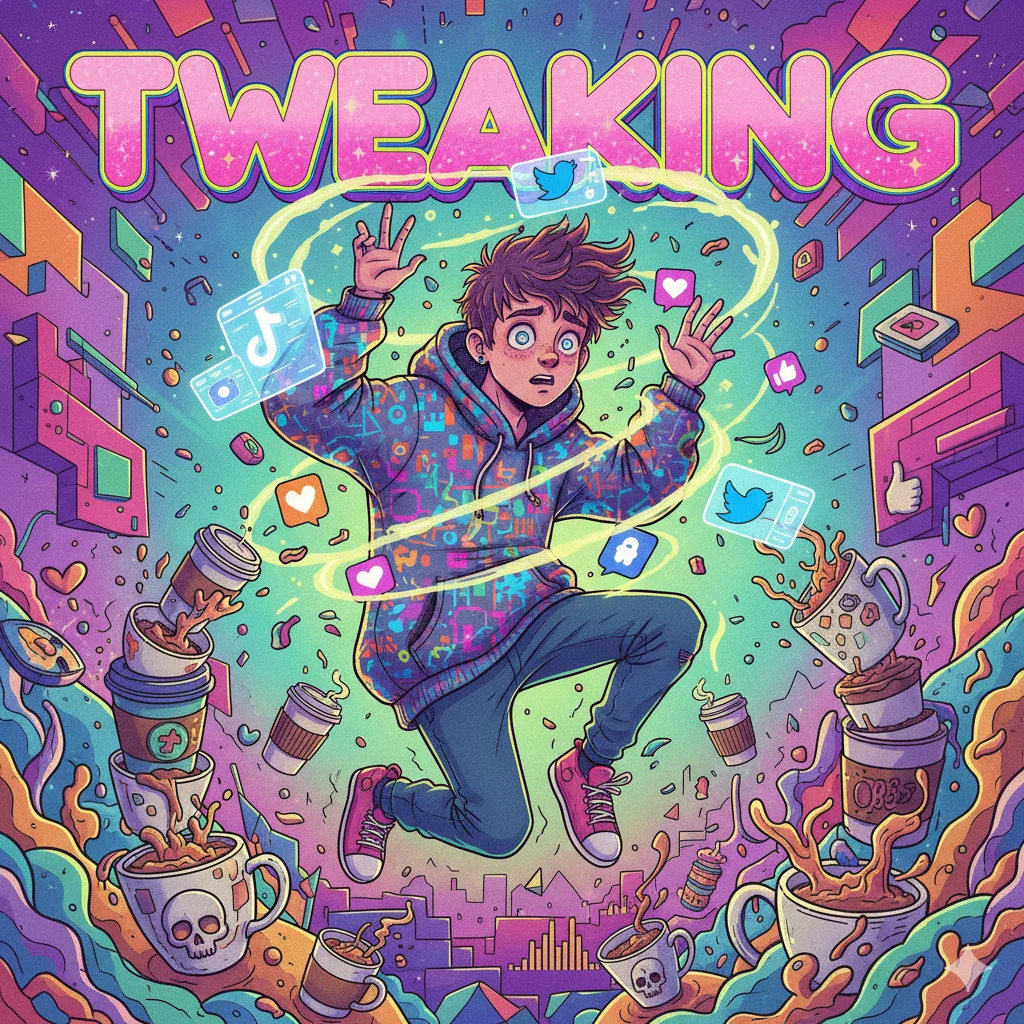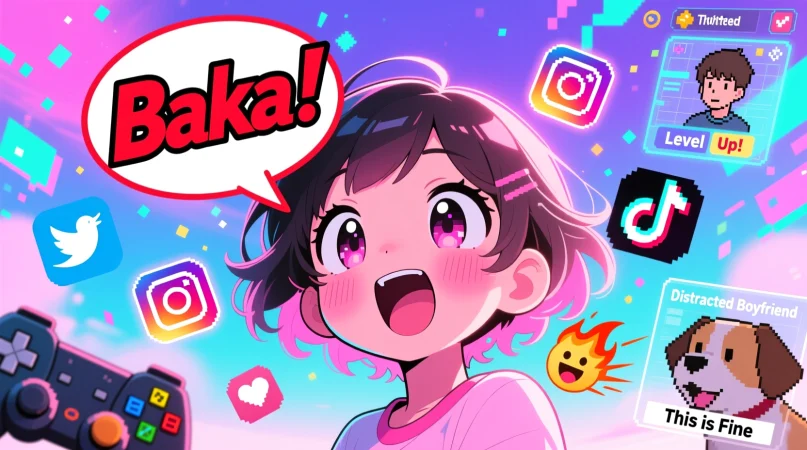In today’s digital world, slang evolves faster than ever. With social media platforms like TikTok, Instagram, and Twitter dominating communication, new words and phrases appear almost daily. One term that has become increasingly popular is “tweaking.” You might have seen it in viral videos, memes, or casual texts, but many people still ask: what does tweaking mean in slang?
Unlike its literal definition—referring to adjusting or fine-tuning something—slang tweaking describes a person’s behavior. It can indicate nervousness, hyperactivity, overreaction, or even excitement. Understanding this slang is essential for staying current with online culture, connecting with younger audiences, or simply avoiding misunderstandings in casual conversation.
Slang like tweaking isn’t just about words—it’s a reflection of culture, emotion, and social trends. For instance, someone texting their friends might say:
“Stop tweaking, it’s just a small issue.”
Here, tweaking doesn’t refer to adjusting anything—it conveys restlessness or overreacting. Social media users have embraced this term in creative ways, adding humor, exaggeration, and personality to their posts.
In this ultimate guide, we’ll dive deep into everything about tweaking in slang:
- Its origins and how it evolved
- Different contexts for usage
- Real-life examples, including memes and social media
- Regional variations
- Common FAQs and misconceptions
By the end, you’ll fully understand what tweaking means, how to use it appropriately, and why it’s so widespread in 2025.

What Does Tweaking Mean in Slang?
1.1 Definition and General Understanding

In slang, tweaking refers to behavior that is anxious, hyperactive, jittery, or erratic. It’s commonly used in casual conversation, text messages, and online posts to describe someone who:
- Overreacts to minor problems
- Appears restless or fidgety
- Exhibits bursts of nervous energy
- Shows paranoia or hyperawareness
Key distinction: Unlike traditional usage (adjusting or fine-tuning), slang tweaking focuses on behavior, emotion, or reaction rather than literal action.
Example in casual conversation:
“She’s tweaking because she lost her wallet.”
Here, tweaking communicates worry and nervous energy, not technical adjustment.
1.2 Behavioral Traits of Tweaking

People described as tweaking often show:
- Physical signs: Fidgeting, pacing, tapping fingers, wide-eyed expressions.
- Emotional signs: Anxiety, irritability, frustration, or excitement.
- Cognitive signs: Overthinking, paranoia, or being hyper-focused on minor issues.
- Social signs: Rapid speech, abrupt reactions, or excessive concern about others’ opinions.
Example:
“He’s been tweaking all morning over the group project deadline.”
This behavior can occur with or without stimulants or caffeine, but the essence remains the same: restlessness and overreaction.
Suggested Image Prompt:
“Illustration of a person wide-eyed, jittering with nervous energy, surrounded by papers, coffee cups, and buzzing phone notifications.”
1.3 Tweaking in Online and Texting Culture
On social media and messaging apps, tweaking often appears in:
- Exaggerated reactions: People overdramatize small incidents for humor.
- Memes: Capturing relatable experiences of overreacting or being hyper.
- TikTok captions: Videos showing someone acting anxious or energetic labeled with “tweaking.”
Example:
“Me when I realize I have homework due tomorrow… I’m tweaking!”
Tweaking here combines humor with a relatable emotional reaction, making it ideal for viral content.
Suggested Image Prompt:
“TikTok-style meme illustration of a student panicking over homework with the caption ‘I’m tweaking!'”
1.4 Tweaking vs Literal Meaning
Traditionally, tweaking means:
- Adjusting settings
- Fine-tuning devices or machines
- Making small modifications
Slang vs literal:
| Context | Meaning |
|---|---|
| Literal | Adjusting, fixing, modifying |
| Slang | Nervous, hyperactive, anxious, overreactive behavior |
Example comparison:
- Literal: “I’m tweaking the settings on my camera.”
- Slang: “Stop tweaking over what she said in the group chat.”
Understanding this distinction is crucial to avoid misunderstandings, especially when reading online content or texting with friends.
1.5 Emotional and Social Impact of Tweaking
- Positive side: Sometimes, tweaking can be fun or energetic, e.g., excitement over a new game or project.
- Negative side: Can indicate stress, anxiety, or overstimulation, leading to social tension.
Example:
“She was tweaking all night over the surprise party preparations.”
- Social media amplifies tweaking behavior, turning minor anxiety into viral humor.
- Recognizing when someone is tweaking helps empathize or join the joke appropriately.
1.6 Variations of Tweaking in Slang
Tweaking may appear in slightly different forms:
- Tweaker: a person who frequently exhibits this behavior
- Tweaked out: someone currently acting hyperactive or nervous
- Tweaking hard: extreme nervous or hyperactive behavior
Example:
“Don’t be a tweaker, it’s just a minor glitch.”
Origins of Tweaking in Slang
2.1 Early Origins in Drug Culture
The slang term “tweaking” initially emerged in drug culture, particularly among users of stimulants like methamphetamine and high-caffeine energy substances. In this context, tweaking described physical and psychological reactions:
- Restlessness or fidgeting
- Anxiety or paranoia
- Rapid speech and hyper-focused behavior
- Erratic movement
Example from early usage:
“He’s been tweaking all night after using meth.”
While the origin is associated with drugs, the term has evolved beyond substance use, now describing similar behaviors caused by stress, excitement, or even social media frenzy.
2.2 Tweaking in the 2000s: From Subculture to Mainstream
By the early 2000s, tweaking began appearing in underground music scenes and online forums. Communities on platforms like MySpace and early YouTube started using the term more casually:
- Hip-hop and rap culture: Lyrics referenced tweaking to describe nervous energy or high-stress situations.
- Online forums: Users discussed personal experiences of feeling jittery or anxious, calling it tweaking.
This era marked the transition from strictly drug-related slang to social behavior slang, broadening its meaning to include general hyperactivity or overreaction.
Example:
“I was tweaking all morning over my exam schedule.”
2.3 Social Media and the Spread of Tweaking
The real explosion of tweaking as mainstream slang came with social media:
- TikTok: Short videos exaggerate reactions to events—often labeled “tweaking” for humor.
- Instagram: Stories and memes depict people reacting anxiously or energetically.
- Twitter/X: Users tweet relatable experiences using tweaking in hashtags (#tweaking, #tweakerlife).
The visual nature of these platforms amplified the slang, making it funny, relatable, and shareable.
Example:
“Me after seeing my inbox flood—tweaking!”
2.4 Linguistic Evolution
From a linguistic perspective, tweaking is an example of semantic shift, where a word’s meaning evolves over time:
- Original meaning: Adjusting or fine-tuning
- Drug-related meaning: Jittery, hyperactive behavior
- Modern slang: General anxious, hyper, or overreactive behavior
This shift reflects broader trends in language evolution influenced by technology and social interaction.
Example:
Literal: “I’m tweaking my guitar settings.”
Slang: “Stop tweaking over a small text.”
2.5 Regional and Cultural Adaptations
- United States: Most common slang usage—hyperactive, anxious, or overreactive behavior.
- UK: Less common; similar terms include “freaking out” or “losing control.”
- Australia & Canada: Variations like “losing it” or “losing your chill” exist, though tweaking is gaining popularity online.
- Social Media Culture: The term is widely understood globally thanks to memes, viral videos, and TikTok trends.
2.6 Memetic Evolution
Tweaking has also entered meme culture, which has significantly contributed to its popularity:
- Memes exaggerate human reactions—perfect for tweaking
- Viral captions like “Me when I realize…” often end with “tweaking”
- Influencers post reaction videos labeled as tweaking for comedic effect
Example Meme Caption:
“When you see your crush online… I’m tweaking!”
This shows how tweaking moved from niche slang to a widespread cultural phenomenon, often detached from its original drug-related context.
2.7 Tweaking in Music and Pop Culture
Music, especially hip-hop, rap, and alternative genres, often references tweaking to convey stress, paranoia, or intense energy:
- Lyrics: “I’ve been tweaking all night…”
- Music videos: Characters acting jittery or hyperactive
- Influence: Younger audiences adopt the term in daily speech
Example:
“Lyrics in the song describe a character tweaking after a high-stakes situation, showing emotional and physical tension.”
2.8 The Role of Online Communities
Online communities like Reddit, Discord, and Tumblr further contributed to the spread:
- Personal experiences described as tweaking
- Humor-driven exaggeration of reactions
- Cross-posting on social media platforms amplified awareness
Example from Reddit:
“I’m tweaking so hard over my group project, can’t even focus.”
Conclusion
Understanding tweaking in slang is essential for anyone navigating modern social media, texting, or casual conversation. What started as a term tied to drug culture has now transformed into a widely understood expression of behavior, describing hyperactivity, anxiety, restlessness, or excitement.
Whether someone is tweaking over deadlines, social situations, memes, or caffeine, the term captures a relatable human experience. From TikTok videos to Instagram memes, tweaking has become part of the online cultural lexicon, illustrating the power of social media in shaping language.
Key takeaways:
- Tweaking ≠ literal adjustment. Always consider context.
- Multiple contexts exist: social, party, tech, academic, and meme culture.
- Behavioral vs. literal: Tweaking is about reaction, not modification.
- Regional nuances: Slang may vary slightly in the UK, Australia, or Canada, but the concept is widely understood online.
The rise of tweaking also highlights the broader trend of slang evolving quickly due to digital platforms. Memes, reaction videos, and hashtags accelerate understanding and adoption, making slang more interactive and visual. Learning slang like tweaking not only helps you connect with peers but also ensures you stay culturally relevant online.
Finally, knowing when and how to use tweaking ensures you communicate naturally and humorously, whether in casual texting, online posts, or social media reactions. Next time you see someone tweaking, you’ll understand whether they’re overreacting, excited, or just expressing energy, making it easier to respond or join the joke appropriately.
FAQs
Q1: What does tweaking mean in slang?
A: Tweaking in slang refers to acting jittery, anxious, hyperactive, or overreactive, often due to stress, excitement, or social pressure.
Q2: Is tweaking related to drugs?
A: Originally, yes—it was used in stimulant or meth culture—but today it commonly describes behavior unrelated to drugs.
Q3: Can tweaking be positive?
A: Yes. It can indicate energetic enthusiasm, excitement, or creativity, especially in tech, gaming, or social media contexts.
Q4: What is a tweaker?
A: A tweaker is a person who frequently exhibits jittery, anxious, or hyperactive behavior.
Q5: What does “tweaking hard” mean?
A: It refers to someone displaying extreme nervous, anxious, or overreactive behavior.
Q6: How is tweaking used on social media?
A: It’s often used humorously to exaggerate emotional reactions, appearing in memes, TikTok videos, Instagram posts, and tweets.
Q7: Is tweaking offensive slang?
A: Generally, no. It’s informal and casual, though it’s best not to use it to mock someone’s mental health or anxiety.
Q8: Are there regional differences in using tweaking?
A: Yes. In the UK, similar slang includes “freaking out”; in Australia, “losing it”; and in Canada, “losing your chill.”
Q9: Can I use tweaking in professional settings?
A: Rarely. It’s mostly informal slang and best suited for casual conversations or social media.
Q10: How can I emphasize tweaking online?
A: Use emojis like 😬, 😱, 🤯, or 😅 to enhance the expression in memes, texts, or posts.




